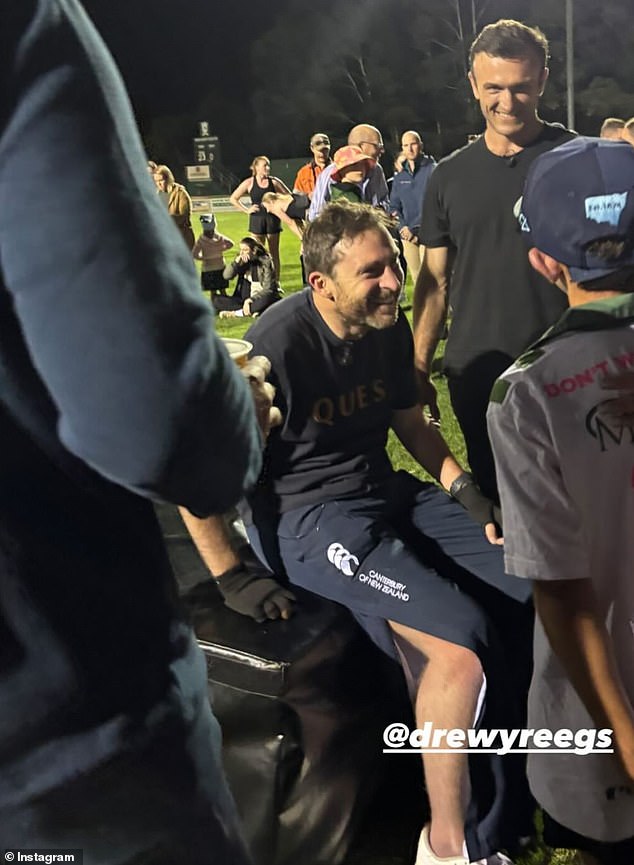Andrew Regan’s journey embodies the core elements of endurance: resilience, adaptation, and community. Three years ago, he faced a life-altering injury on the rugby field that shifted his relationship with movement and ambition. The experience required him to challenge the very essence of what it means to push through hardship, not just as an athlete, but as a person navigating the complexities of recovery.
In the realm of endurance sports, we often speak of a plateau—those periods when physical progress seems stagnant, and the mental battles become more pronounced. Andrew’s injury led him to a literal and figurative plateau, one that forced a reckoning with his identity and capabilities. Diagnosed as an incomplete quadriplegic following a tackle where he damaged his C4 and C5 vertebrae, he was thrust into a world of uncertainty. In moments like these, athletes are called upon to dig deep into their reserves of mental strength. The moment when Andrew first regained the ability to move his thumb mirrored those gradual breakthroughs we experience in enduring sports; a signal that there is hope, that adaptation is possible, and that persistence can yield surprising results.
As endurance athletes know, recovery is seldom linear. Andrew began a journey marked by rigorous rehabilitation that included hydrotherapy and physical therapy, reminiscent of our own training cycles, where small increments lead to monumental change over time. The challenge was not simply physical; it was about confronting fears and redefining goals. The mind must learn to trust the body again, to coalesce into a unit that aligns with the new reality. Every movement, however small, becomes a celebration, a step along a path many would view as daunting.
His decision to return to the site of his injury underscores a crucial aspect of resilience: reclamation. Just as an athlete may confront a challenging course after a setback, Andrew’s walk across the Endeavour Oval became an act of both defiance and acknowledgment. It was a reclaiming of agency in an environment that had once rendered him vulnerable. He had transformed a site of trauma into a stage for triumph, an incredible demonstration of mental fortitude.
The importance of community resonates deeply within endurance sports. We often train in groups, rely on supporters during events, and draw strength from knowing others are on a similar path. Andrew’s walk saw the rugby community gather, forming a corridor of support, embodying the collective spirit that endurance athletes thrive on. The camaraderie shared on training runs or during races is mirrored in Andrew’s experience; the shared effort of supporting one another is a cornerstone in the pursuit of endurance, as vital as physical training itself.
When he completed the walk, the mix of exhaustion and elation spoke to the very essence of endurance—the culmination of effort, mental discipline, and the nurturing of a supportive community. The fatigue he experienced, interspersed with spasms, aligns with the struggles we all face in our own training sessions. There is a rhythm to pushing through discomfort, discovering what our bodies can achieve despite barriers. It’s a testament to the training adaptations we make, gradually recalibrating ourselves to redefine what is possible.
Andrew has become an ambassador for the Emus Foundation, which supports injured rugby players, illuminating another dimension of endurance: empathy and giving back to the community. This sense of purpose can serve as motivation for athletes, transcending individual achievement and fueling a commitment to uplift others in the challenging world of sport.
As seasoned endurance athletes, we can often fall into the trap of focusing solely on our individual journeys, striving for personal records or breaking through physical barriers. Andrew’s story serves as a reminder, however, that resilience is not just about the individual; it thrives in a shared space. Empathy and connection can drive us to reclaim not just our paths but also give new meaning to them through collective struggles.
In our next long training session, let’s carry with us a vital takeaway from Andrew’s journey. It’s essential to recognize that the road may twist unexpectedly; hills may rise before you, and the goal may seem distant. But within that struggle exists the potential for growth, camaraderie, and the fulfillment that comes from resilience—not only to push ourselves but to support others on their journeys. Embrace the discomfort, lean on your community, and remember: there is power in both your strides and your stillness.
